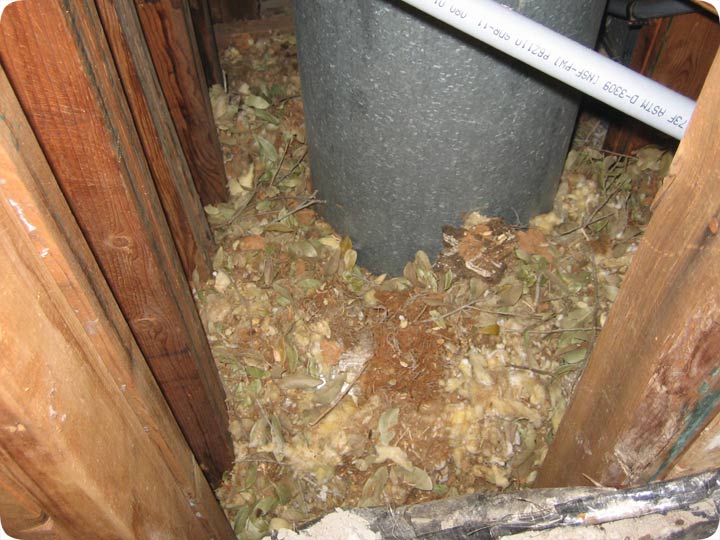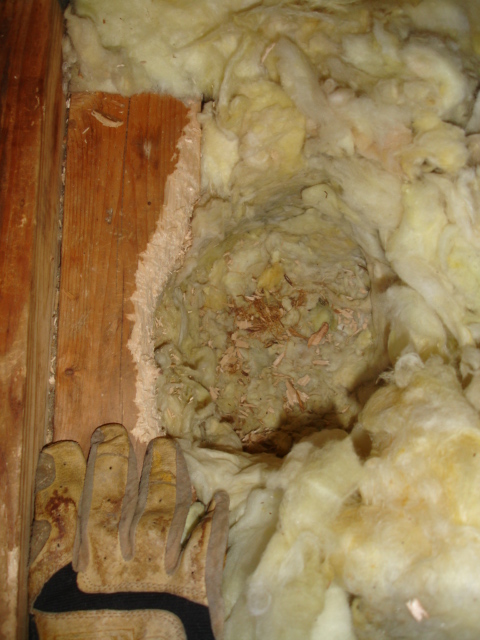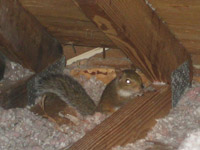Photos of Damage from Squirrels in Attic Torn Ducts, Wires, Pipes
squirrel nest attic - Photos of Damage from Squirrels in Attic Torn Ducts, Wires, Pipes - Squirrels Nest

Source: http://www.squirrel-attic.com/pix/nestingdebris.jpg
It’s imperative that you manage to note, first of just about all, that different kinds regarding squirrels nest differently. Typically the squirrel family consists regarding tree squirrels, ground squirrels, and flying squirrels, nevertheless also contains chipmunks, petit, and prairie dogs. On the other hand, for the sake regarding this short article we’ll adhere with those first about three types mentioned because they are typically what most folks consider whenever they notice ‘squirrel’. Tree squirrels together with flying squirrels live generally among trees, while surface squirrels typically live inside burrows within the surface or among rocks. Typically the Eastern gray squirrel regarding North America, the reddish squirrel of Eurasia, along with the United states fox squirrel are considered because many common and well identified forms of tree squirrels, together with share similar nesting practices through the continents.
Just about all squirrels nest within anything. Whether it’s inside the floor or perhaps a woods, the conventional shelter for squirrels to make on their own plus because of their young usually are nests. The variation among these nests will depend on the actual sort of squirrel, the actual geographic location, and the actual season or environment. With regard to tree squirrels and soaring squirrels, the nest consist of dens or drays. A den is made from the side from the tree and it is usually constructed using moss plus leaves for bedding. Play rooms might be constructed into forgotten woodpecker holes and the organic cavities of a woods. Because a den just has to be covered on the specific portion facing outwards, they will naturally offer squirrels greater shelter and protection through wind and precipitation. With regard to these reasons most varieties of tree squirrel choose to use dens during the entire winter season. In case however several shortage associated with natural dens inside a particular area, leaf nests (also referred to as drays) be a little more common.

Source: https://goguiltypleasures.files.wordpress.com/2013/01/attic-nest.jpg
A dray is really a nest that is internal the branches of your tree and includes leaves and twigs arranged if required. A dray usually serves as a location for squirrels to look for shelter during warmer summer months whilst providing a good spot to raise babies. However, drays can also be used by squirrels in the cold months of winter as well. For a dray to offer shelter and warmth of these harsher months, squirrels will harden and thicken their drays by having more layers of leaves, twigs, and moss. If you ever discover a baby squirrel search for and you might start to see the nest.
Squirrels have a bad rap in lots of places, but I won’t stand for them being dissed here, especially because I keep up with the local ones. And, like every animals, if you see them regularly and close, you learn a lots of cool biology. In case you didn’t know, squirrels do build nests to guard their babies and also to stay warm in the winter months; maybe you have seen them in the form of big balls of leaves up inside the trees, which are more visible in winter. While some squirrels use treeholes, the making of a leaf nest is pretty intricate.

Source: http://montgomerywildliferemoval.com/img/wildlife-gallery/squirrel-trapping-removal/thumb/flying-squirrel-nesting-material.jpg
Squirrels’ nests, otherwise known as dreys, may seem like aimless clumps of leaves but are actually fairly intricate within their construction, with several layers of varied materials. Tree squirrels also search for advantageous locations with built-in support, just like the juncture of various divisions emerging from your shrub trunk or possibly a tangle of grape vines. Several squirrels build nests in tree cavities as opposed to among the list of high branches. Typically the squirrel commences by around weaving a platform of live green twigs. About surface of this, gentle, compressible materials like grass and damp leaves are added. Then an exterior skeleton of twigs and vines is made throughout the insulated core, lastly, additional material covers in and strengthens the shell.
For the common gray squirrel, Sciurus carolinensis, the core cavity is about six to eight in . across. Smaller species build proportionally smaller nests. A single study of nest materials employed by European ground squirrels found that damp ends in and moss provided better insulation than dry liner materials. A 2013 The german language hidden-camera study from a red squirrel filmed a nesting being built-in work periods totaling a lot more than three and a 1 / 2 hours over three days and nights. The squirrel carried materials towards the website with all the mouth and front paws; bent stiffer twigs with its head and face; pushed other material into place using its lower limbs; shredded lining components by holding them with the front paws and nibbling; and shaped the lining hole by lying from it and turning around.

Source: http://www.batguys.com/images/squirrels/attic-nest.jpg
But you could be wondering what about ground squirrels? So what do their nests look like? For a tree den, ground squirrels utilize dens at the same time, although they’re underground : hence the name ‘ground’ squirrels. If these creatures are near your area, you’ll always be accustomed to them and will probably easily view the difference between them along with their tree-dwelling brethren. While a tree squirrel will run straight towards a woods by trying to approach it, a floor squirrel is instead going to sprint for his underground den in the same situation. The subterranean den of your floor squirrel is made by searching an opening and setting up a burrow or maybe a system of underground tunnels. You may be able to spot a ground squirrel hole when there is a feature small dirt pile alongside it. And sometimes, its keep is a big population of ground squirrels, there'll be many holes along with many small hemorrhoids of dirt.

Source: http://www.aaanimalcontrol.com/Professional-Trapper/images/squirrelattic01.jpg
As for ground squirrel dens, they only dig and dig until they’re quite happy with their underground lairs. As soon as again, the positioning of the floor squirrel’s den is best. Well-known places include sloped floor where flooding is less likely to occur, along with under stones, logs, or some other natural structures that could prevent disturbances and risk from all of other digging predators. Floor squirrels also turn it into a priority to acquire a variety of escape routes and a variety of entry and exit holes. This can lead for an intricate subterranean system of tunnels, especially where there are large populations of ground squirrels. To provide a perception of the dimensions of these dens, the normal size a ground squirrel hole is four ins in diameter, while passageways and burrows are usually no more than three ft thorough.
No Comment